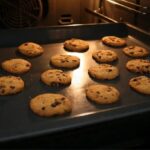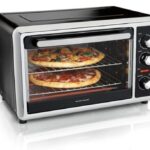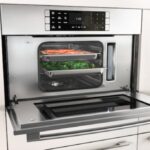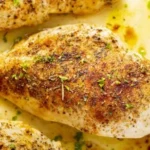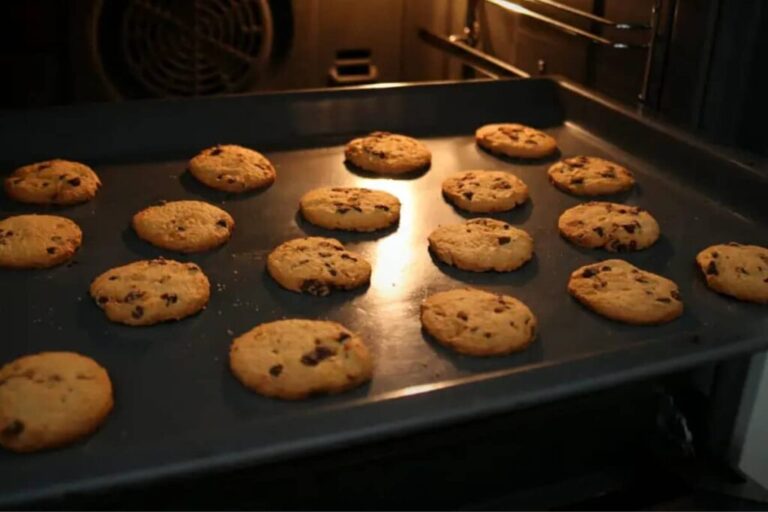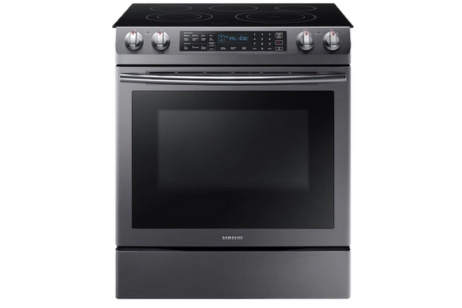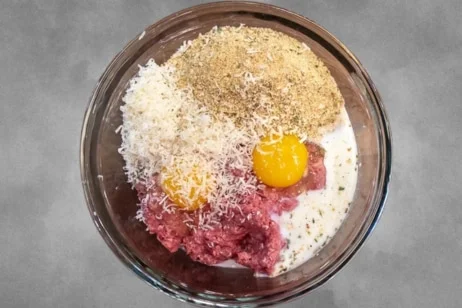Welcome to our comprehensive guide on the oven safe symbol—an essential emblem that ensures your cookware and bakeware can withstand the oven’s heat. Have you ever wondered what that symbol means? Or how to identify if a particular item is oven safe? Look no further as we unravel the mysteries surrounding the oven safe symbols and equip you with the knowledge to navigate your culinary adventures confidently.
In this blog post, I’d like to explore the meaning and significance of oven safe symbols and their visual representation and provide valuable insights into identifying oven-safe products. We will also discuss the materials suitable for oven use and shed light on those that should be avoided.
Understanding the oven-safe symbol is crucial for amateur home cooks and seasoned culinary enthusiasts. By adhering to the guidelines and recommendations associated with this symbol, you can ensure the safety and longevity of your cookware, all while enjoying the benefits of hassle-free oven cooking.
Table of Contents
ToggleWhat Is The Oven Safe Symbol?
The oven safe symbol is a small icon or marking found on cookware and bakeware that indicates whether the item is safe to use in the oven. It serves as a helpful guide, reassuring users that their chosen product can withstand the high temperatures typically in oven cooking.
The symbol varies in appearance but typically consists of a stylized representation of an oven or a set of wavy lines that suggest heat or waves. It is often accompanied by “oven safe” or “oven proof” for clarity. Understanding the oven safe symbol is essential to prevent damage to cookware and ensure the safety of your cooking endeavours.
What Does The Oven Safe Symbol Mean?
The oven safe symbol carries significant meaning for home cooks and professional chefs. When you come across this symbol on your cookware or bakeware, it signifies that the item has been specifically designed and tested to withstand the oven’s high temperatures.
You can safely transfer your cookware from stovetop to oven by using oven safe products, allowing for many different ways to cook, such as baking, roasting, broiling, and more. This symbol assures that the material and construction of the cookware can handle the heat without warping, melting, or releasing harmful substances.
When a product carries the oven-safe symbol, it implies that it has undergone rigorous testing to ensure its durability and performance in high-temperature environments. This testing process typically involves subjecting the cookware to extreme heat conditions to verify its resistance and stability.
It’s important to note that the oven safe symbol does not guarantee that the item is suitable for all oven-related applications. Different materials and designs may have specific temperature limitations or recommendations, which should be followed to prevent potential damage or safety hazards.
What Does The Oven Safe Symbol Look Like?
The oven safe symbols come in various forms and designs, but it generally consists of a recognizable icon or marking that indicates the item’s suitability for oven use. While no standardized symbol exists across all brands and products, certain visual representations are commonly used.
One common depiction of the oven safe symbols resembles a small oven or an oven rack. This representation signifies that the cookware or bakeware can be safely placed inside an oven without any negative consequences. It is often accompanied by “oven safe” or “oven proof” for clarity.
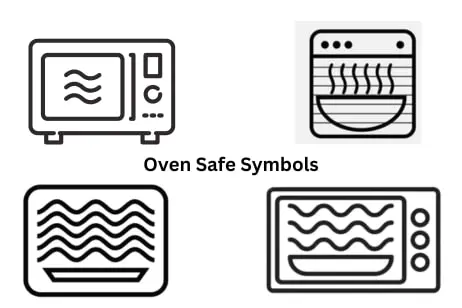
Another symbol variation consists of wavy lines, which can be interpreted as heat waves or waves of radiation. This design conveys the cookware’s ability to withstand and distribute heat evenly throughout the oven without warping or compromising its integrity.
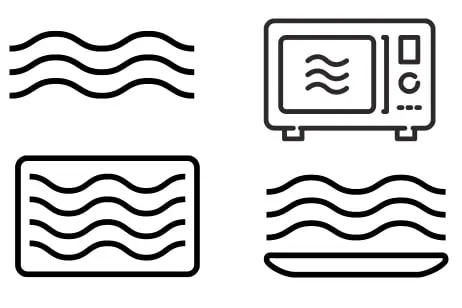
Some manufacturers may use text and graphical elements to communicate the oven-safe feature effectively. For instance, you might come across labels incorporating the words “oven safe” and an image of an oven or heat waves.
How To Know If Something Is Oven Safe?
Knowing whether something is oven safe is crucial for preventing accidents and maintaining the integrity of your cookware. Here are some ways to determine if a particular item is suitable for use in the oven:
1. Check the manufacturer’s instructions:
The first step is to refer to the product’s packaging, label, or instruction manual. Look for specific indications or statements regarding oven safety. Manufacturers often provide clear guidelines on whether their product is oven safe and up to what temperature it can withstand.
2. Look for the oven safe symbol:
As discussed earlier, the oven-safe symbol is a visual indicator that denotes a product’s suitability. It can appear as an icon, text, or combination. Examine the cookware or bakeware for the presence of this symbol. It may be on the item’s bottom, side, or handle.
3. Check for temperature specifications:
In addition to the oven safe symbol, pay attention to any temperature specifications provided by the manufacturer. Some products may explicitly mention a recommended temperature range or a maximum temperature limit. Ensure that the intended oven use aligns with these specifications.
4. Assess the material and construction:
Different materials have varying levels of heat resistance. Certain materials, such as stainless steel, cast iron, and oven-safe glass, are known for their ability to withstand high temperatures. Verify if the material used in the cookware is suitable for oven use. Also, check if the item’s construction is sturdy and durable enough to endure the oven’s heat.
5. Research online or consult customer support:
If unsure about an item’s oven safety, consider researching online. Look for product reviews, forums, or FAQs that might provide insights into its oven suitability. Alternatively, contact the manufacturer’s customer support for clarification and guidance.
How to Clean Burnt Sugar from Oven: Learn 11 Easy Methods
Materials That Are Oven Safe
Regarding oven-safe materials, several options are commonly used in cookware and bakeware. Here are some materials known for their ability to withstand the heat of the oven:
- Stainless Steel: People often choose stainless steel for oven-safe cookware. It can last long, doesn’t rust, and withstand high temperatures without warping. Stainless steel pans and baking sheets are versatile and can be used for various oven-cooking methods.
- Cast Iron: Cast iron cookware is renowned because it keeps heat well and spreads it out evenly. It is highly durable and can withstand high oven temperatures. Cast iron skillets, Dutch ovens, and baking pans are ideal for dishes that require prolonged heat exposure.
- Oven-Safe Glass: Certain types of glass, such as borosilicate glass, are designed to be oven safe. These glass materials can handle thermal shock and maintain integrity when exposed to high temperatures. Oven-safe glass cookware, like casserole dishes and baking dishes, is great for oven baking and roasting.
- Ceramic and Porcelain: Ceramic and porcelain materials can be oven safe, but it’s essential to check the manufacturer’s instructions for temperature limitations. These materials are commonly used for baking dishes, ramekins, and oven-safe ceramic cookware.
- Stoneware: Stoneware is another oven-safe material known for its excellent heat retention. It can withstand high temperatures and is often used for baking dishes, pizza stones, and bread pans.
- Silicone: While silicone is not a traditional cookware material, it is widely used for oven-safe baking mats, oven mitts, and some molds. Silicone withstands high temperatures and provides non-stick properties.
Always refer to the manufacturer’s instructions and guidelines to confirm the oven safety of specific cookware items. It’s important to note that not all materials are suitable for extremely high oven temperatures. Hence, following the recommended temperature ranges for each material is crucial to prevent damage or safety hazards.
How to Turn Off Samsung Oven? Easy Guide in 4 Steps
Materials That Are Not Oven Safe
While many materials are oven safe, it’s equally important to be aware of unsuitable materials. Using these materials in the oven can lead to damage, release harmful substances, or pose safety hazards. Here are some materials that are generally not oven safe:
- Non-Oven Safe Plastics: Most plastics, including regular food storage containers, plastic wraps, and bags, are not designed to withstand high oven temperatures. Plastics can melt, release toxic fumes, or even catch fire when exposed to the oven’s heat.
- Non-Stick Coatings: Non-stick cookware often contains a coating that enhances its non-stick properties. While these coatings are suitable for stovetop cooking, they may not be oven safe at high temperatures. Exposing non-stick cookware to excessive heat can cause the coating to deteriorate or release harmful substances.
- Melamine: Melamine is a plastic commonly used in plates, bowls, and utensils. It is not oven safe and can melt or release toxic chemicals when exposed to high temperatures.
- Thin or Lightweight Aluminum Foil: While aluminum foil is commonly used in the kitchen, thin or lightweight foil should not be used directly in the oven. It can easily tear, leading to food spillage or uneven heating. If using aluminum foil in the oven, opt for heavy-duty foil specifically designed for high-temperature applications.
- Wood or Bamboo: Wooden or bamboo utensils, cutting boards, and other wooden kitchen items should not be placed in the oven. These materials can dry out, crack, or even catch fire when exposed to high heat.
- Certain Decorative or Painted Items: Decorative ceramics, plates, or dishes with decorative paint or glaze may not be oven safe. The paint or glaze could contain materials not intended for high-temperature exposure and may release harmful substances when heated.
Always consult the manufacturer’s instructions and guidelines to determine the oven safety of specific materials or products. It’s crucial to prioritize safety and avoid using materials that pose risks when exposed to oven temperatures.
10 Reasons Why Your Oven Is Not Working and How to Fix?
Benefits Of Using Oven-Safe Cookware
Using oven-safe cookware offers numerous benefits that enhance your cooking experience and allow for a broader range of culinary possibilities. Here are some advantages of using oven-safe cookware:
1. Versatility:
Oven-safe cookware opens up a world of cooking techniques and recipes. From baking and roasting to broiling and braising, oven-safe cookware allows you to explore various cooking methods. You can easily transition from stovetop cooking to oven finishing without transferring food to different containers.
2. Convenience:
You can prepare complete meals in a single dish with oven-safe cookware. It simplifies the cooking process by allowing you to combine ingredients, cook them in the oven, and serve directly from the same dish, minimizing the number of utensils and dishes to clean.
3. Even Heat Distribution:
Oven-safe cookware, such as stainless steel or cast iron, is designed to distribute heat evenly throughout cooking. This ensures consistent and uniform cooking, preventing hot spots or unevenly cooked food.
4. Enhanced Flavor and Texture:
Using oven-safe cookware can enhance the flavors and textures of your dishes. It allows ingredients to caramelize, develop richer flavors, and achieve desirable textures. For instance, vegetables roasted in the oven develop a wonderful caramelized skin and retain their inherent sweetness.
5. Durability:
Oven-safe cookware is made from durable materials like stainless steel, cast iron, or oven-safe glass. These materials are reliable, stable over extended periods, and can tolerate extreme heat.
6. Time and Energy Efficiency:
Utilizing oven-safe cookware can be more time and energy efficient. Utilizing the oven’s enclosed space and efficient heat distribution can often achieve optimal cooking results with less time and energy than stovetop cooking methods.
7. Easy Cleanup:
Many oven-safe cookware options are designed with non-stick or easy-to-clean surfaces, reducing the effort required for cleaning. Some materials, like stainless steel or oven-safe glass, naturally resist stains and food buildup, making post-cooking cleanup a breeze.
By investing in and utilizing oven-safe cookware, you can expand your culinary repertoire, enjoy enhanced flavors and textures, and experience the convenience and efficiency of oven cooking. It’s a worthwhile addition to your kitchen arsenal that offers versatility and elevates your cooking endeavors.

FAQs
Can I Put Any Pan In The Oven?
Not all pans are oven safe. Check the manufacturer’s instructions or look for the oven-safe symbol on the pan to ensure it can withstand the heat.
How To Tell If A Pan Is Oven Safe?
Look for the oven safe symbol on the pan or check the manufacturer’s instructions. Avoid using it in the oven to prevent damage or safety hazards if in doubt.
How Can You Tell If A Bowl Is Oven Safe?
Check for an oven safe symbol or look for information in the bowl’s packaging or manufacturer’s instructions. Avoid placing bowls in the oven if their oven safety is uncertain.
How do you know if something is Oven safe?
Check for the oven safe symbol, follow the manufacturer’s instructions, or refer to the product packaging. This ensures you are using items specifically designed for oven use.
How can you tell if a Pan is Oven proof?
Look for the oven safe symbol on the pan or consult the manufacturer’s instructions. Oven-proof pans can withstand the oven’s high temperatures without warping or melting.
Does oven ware mean Oven safe?
Not necessarily. While the term “ovenware” suggests suitability for oven use, it’s essential to look for the oven safe symbol or follow the manufacturer’s guidelines for oven safety confirmation.
What does safe mean in the Oven?
“Safe” in the context of the oven means that the item is designed to withstand the oven’s high temperatures without damage or posing safety risks. It ensures proper performance during oven cooking.
What isn’t safe to Oven?
Items such as non-oven safe plastics, non-stick coated pans at high temperatures, melamine, thin aluminum foil, wood, and certain decorative or painted items are unsafe for oven use. Always check the manufacturer’s instructions and guidelines to ensure safety.
Read More
How to Clean Frigidaire Oven? Discover 2 Methods


